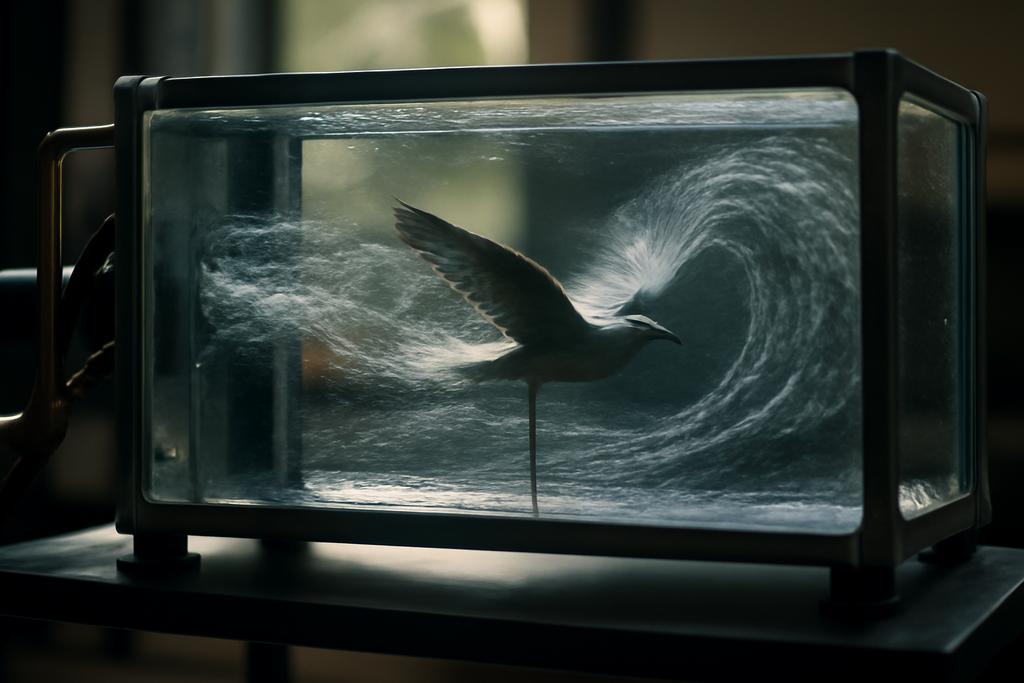Seeing the Unseen Currents That Shape Our World
Fluid dynamics—the study of how liquids and gases move—often feels like a hidden art. It’s the invisible choreography behind everything from the way birds soar to how smoke curls from a chimney. Yet, for many students, the swirling eddies and invisible forces remain abstract concepts, trapped in equations and diagrams. That’s why the work from researchers at Kiel University of Applied Sciences and Optolution Messtechnik GmbH is so refreshing: they’ve built a compact water tunnel that turns these invisible flows into vivid, measurable phenomena, right on a tabletop.
This isn’t just a fancy aquarium. It’s a modern homage to Ludwig Prandtl, the father of fluid mechanics, whose pioneering water tunnel experiments over a century ago laid the groundwork for understanding airflow and lift. The team, led by William Thielicke and Steffen Risius, has combined this classic setup with Particle Image Velocimetry (PIV)—a laser-based technique that tracks tiny particles suspended in water—to capture the dance of fluid motion in stunning detail.
Why a Water Tunnel? Why Now?
Imagine trying to grasp how air flows around an airplane wing or how vortices form behind a cylinder. In air, these flows are invisible and fast. But water moves slower and can be seeded with tiny particles that reflect laser light, making the flow patterns visible and measurable. The researchers designed a small, recirculating water tunnel about 1.2 meters long, where water speeds reach up to 0.45 meters per second—slow enough to observe, fast enough to mimic real aerodynamic conditions at low Reynolds numbers (a key dimensionless number in fluid mechanics).
By shining a thin laser sheet through the water and filming the illuminated particles with a high-speed camera, the PIV system captures snapshots of the flow. Software then stitches these images together to calculate velocity fields—essentially, a map of how fast and in what direction the water moves at every point. This transforms fluid dynamics from a theoretical puzzle into a tangible, visual experience.
The Three Experiments That Bring Fluid Mechanics to Life
The team demonstrated the power of their setup through three classic experiments, each revealing fundamental fluid behaviors that underpin much of aerodynamics and hydrodynamics.
1. The von Kármán Vortex Street: When water flows past a cylinder, it doesn’t just slide smoothly around it. Instead, it sheds vortices—swirling eddies—that alternate sides in a repeating pattern, known as a von Kármán vortex street. This phenomenon is responsible for the rhythmic fluttering of power lines in the wind and even the haunting sounds of bridge cables. Using PIV, the researchers measured the frequency of these vortex sheds and found it matched theoretical predictions with remarkable precision. Students can literally count the swirling vortices as they form and drift downstream, connecting math to mesmerizing visuals.
2. Circulation and Lift Around a Flat Plate: Lift—the force that keeps airplanes aloft—is intimately tied to circulation, a measure of how fluid spins around a wing. By placing a thin flat plate at various angles in the water tunnel, the team measured circulation using two methods: integrating vorticity in the flow and summing tangential velocities around the plate. Both matched classical thin airfoil theory at low angles of attack, but deviations appeared as the plate tilted more steeply, revealing flow separation where the smooth airflow breaks down. This hands-on experiment bridges textbook theory with the messy reality of fluid behavior.
3. Lift Coefficients of a NACA Airfoil: Finally, the researchers tested a NACA-0015 airfoil, a standard wing shape used in countless aerodynamics studies. They measured lift coefficients across angles of attack and compared them to numerical simulations from XFOIL, a widely used computational tool. While the experimental data showed some differences—likely due to flow imperfections in the small tunnel—the overall trends aligned well, giving students a chance to see how theory, computation, and experiment intertwine.
Why This Matters Beyond the Lab
At first glance, a small water tunnel might seem like a niche teaching tool. But its implications ripple far beyond the classroom. Fluid dynamics governs everything from weather patterns to blood flow, from the design of drones to the efficiency of wind turbines. Yet, it remains one of the most challenging subjects to teach because it’s invisible and complex.
This setup offers a rare window into the fluid world, making abstract concepts tangible and intuitive. Students don’t just memorize equations—they watch vortices dance, measure forces, and see theory come alive. This kind of experiential learning fosters deeper understanding and sparks curiosity.
Moreover, the integration of PIV with accessible software like PIVlab and XFLR5 democratizes advanced fluid mechanics education. It lowers the barrier to entry for universities and even high schools, potentially inspiring the next generation of engineers, physicists, and environmental scientists.
The Beauty and Challenge of Fluid Motion
What’s striking about this work is how it captures the dual nature of fluid dynamics: it’s both elegant and unruly. The vortex street behind a cylinder is a rhythmic, almost hypnotic pattern, yet it emerges from chaotic turbulence. The lift on a wing follows neat mathematical laws until flow separation disrupts the order. The water tunnel reveals these nuances in real time, reminding us that nature’s laws are not just formulas on a page but living phenomena.
In a world increasingly shaped by technology and data, reconnecting with the physical, visible world of fluids is a powerful reminder of the wonder beneath everyday experiences. Thanks to the team at Kiel University of Applied Sciences and Optolution Messtechnik GmbH, students and enthusiasts alike can now witness the invisible dance of air and water—and maybe, just maybe, feel a bit closer to the forces that lift us up.










